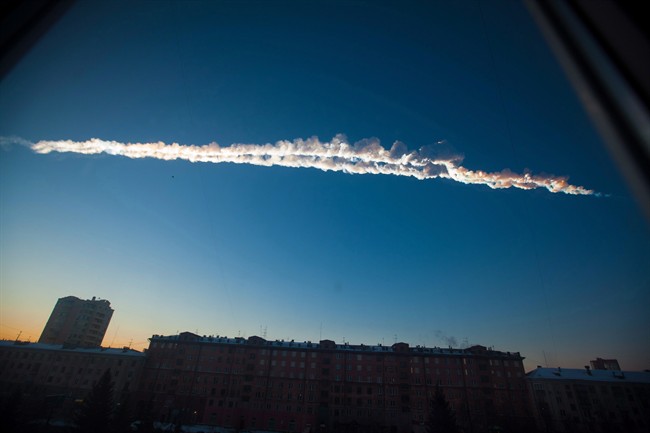The possibility of “city-killing” asteroid 2024 YR4 hitting Earth has doubled within the last few weeks, just like something out of a sci-fi movie.
The asteroid, big enough to wipe out an entire city, now has a higher chance of smashing into our home planet in 2032, according to NASA.
In a new update, the space agency has increased the chances of asteroid 2024 YR4 colliding with Earth, with the probability of impact rising to 3.1 per cent or one-in-32 odds of impact — the highest probability of a collision yet.
This is the highest risk assessment an asteroid has ever received, after the 2.7 per cent chance of Apophis hitting in 2004.
On Feb. 7, experts at NASA had bumped up the odds to a one-in-43 chance, but the probability just keeps rising.
On Monday, NASA said there was a 2.6 per cent chance of the asteroid hitting Earth in 2032 with a one-in-38 chance of impact — the same odds that appear on a roulette wheel.
Scientists have previously said it’s not keeping them up at night and no one should panic, despite not being able to rule out the possibility of an impact.
In late January, the European Space Agency (ESA) gave the asteroid a 1.3 per cent chance of hitting the Earth on Dec. 22, 2032.
The asteroid measures between 40 and 90 metres wide, based on estimates from its reflected light.
“An asteroid this size impacts Earth on average every few thousand years and could cause severe damage to a local region,” the ESA said in a space safety briefing. “As a result, the object rose to the top of ESA’s asteroid risk list.”

Get daily National news
Get the day’s top news, political, economic, and current affairs headlines, delivered to your inbox once a day.
While experts are unsure where the collision would happen, a warning published in late January by the International Asteroid Warning Network (IAWN) said the impact risk corridor extends “across the eastern Pacific Ocean, northern South America, the Atlantic Ocean, Africa, the Arabian Sea, and South Asia.”
If it did strike Earth, 2024 YR4 would cause “severe blast damage,” according to IAWN, spanning as far as 50 kilometres from the impact site.
In January, YR4 was given a Level 3 rating out of 10 on the Torino Impact Hazard Scale, meaning a close encounter with the asteroid was “meriting attention by astronomers,” according to NASA’s Center for Near Earth Object Studies (CNEOS). A collision with Earth is only certain when an object reaches an 8, 9 or 10 rating, with higher ratings indicating more damage likely to be caused.
According to the ESA, NASA and other space agencies will be using the James Webb Space Telescope to continue to get an even more accurate assessment of the asteroid’s size in order to better understand “how significant an impact could be.”
“It is very important that we improve our size estimate for 2024 YR4: the hazard represented by a 40 m asteroid is very different from that of a 90 m asteroid,” the report reads.

A similar-sized asteroid entered Earth’s atmosphere in February 2013 when the early morning sky was set ablaze in Chelyabinsk, Russia.
A fireball was captured on numerous dashboard cameras, traffic cameras and security cameras around the area, making it the most well-documented meteor in history.

The Chelyabinsk meteor burns up over Russia.
THE CANADIAN PRESS/AP Photo/Chelyabinsk.ru, Yekaterina Pustynnikova
The space rock was estimated to be 17 metres in diameter and weighed about 10,000 tonnes before it entered our atmosphere at 65,000 km/h. About 500 kilotons of energy was released.
As the rock pushed the air in front of it, it exploded about 23 kilometres above the atmosphere. More than 1,000 people were injured as the blast shattered windows.
Months later, NASA research found that the plume of debris from the meteor blast in the atmosphere circled the globe in just four days.
A part of the meteorite (once it reaches the ground, it’s called a meteorite and not a meteor) was recovered from a Russian lake in October 2013.
—With files from Global News’ Michelle Butterfield
© 2025 Global News, a division of Corus Entertainment Inc.



